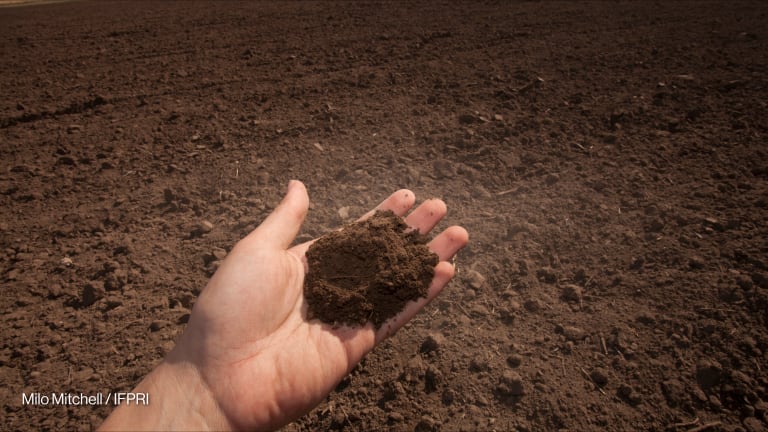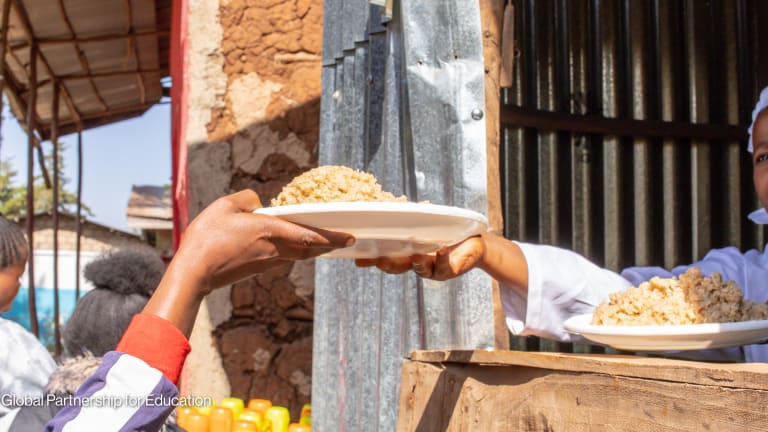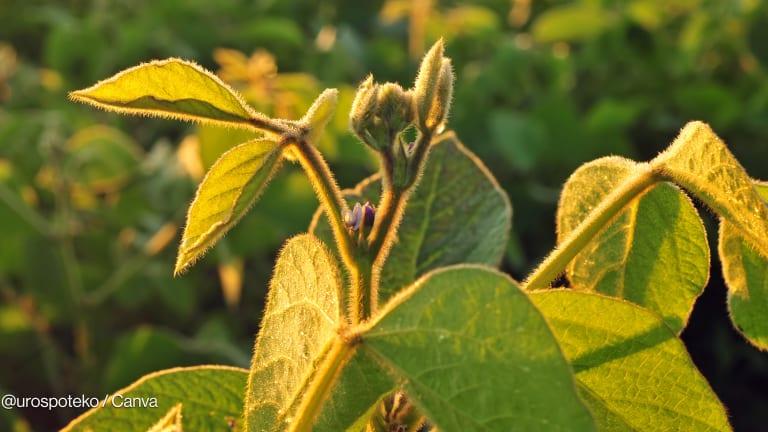Why soil is the fundamental building block of food security
Healthy soil is needed to ensure human nutrition and planetary health, scientists say.
Most people see soil as just the dirt under our feet. But to soil scientist Ronald Vargas, it is the fundamental building block of the entire food system and key to global food security. If soil is not of good quality, with plenty of nutrients, the food it produces will lack proper nutritional value. Depleted soil also restricts farmers’ ability to increase their yields. About 95% of food is grown in soils, Vargas said, but decision-makers often lack awareness of the importance of its quality. “Soils are very clear for a number of ecosystem services they provide. One of them, of course, is food security and nutrition, but also food safety because if we want to ensure you have healthy crops free of pathogens, full of nutrients, and free of contaminants, then the place to work is on soils,” Vargas told Devex. “If you want to deal with climate change mitigation but also building resilience, then soil is the place to go because of the carbon that is accumulated.” Soil quality has become especially important as food prices spike globally, along with the cost of fertilizer, which has led to rising food insecurity. The Food and Agriculture Organization, which first launched the Soil Map of the World in 1961, has proposed increasing soil mapping to help countries understand their soil quality, and allow farmers to apply the right amount of fertilizer — now a precious commodity — on the right crops. As head of the Global Soil Partnership, Vargas works to coordinate between governments, research bodies, and NGOs to promote action on Sustainable Development Goals related to soil health. He also leads technical and scientific cooperation. According to FAO, the partnership has provided more than 500 experts in 52 countries in sub-Saharan Africa and Central America with data on threats to soil and the potential of soil to mitigate the effects of climate change and food insecurity. Soil health is also key to human consumption of micronutrients such as zinc and iron, according to Job Kihara, senior scientist of soils and water management at the Alliance of Bioversity International and CIAT, a research institution. Food grown in soil low in micronutrients will not be as nutritious as that grown in soil rich in them, and there are geographic links to deficiencies among a population to the soil quality where they live. Africa and Central America, in particular, have very depleted soil, he said. “When the soil is of poor quality, the crop production will be poor. And the investments in terms of other inputs will not return or provide good returns. You make investments in labor, you make investments in seed, and you don’t get the returns that you are expecting,” Kihara said. “Even sometimes investment in fertilizers does not give the returns … at the level that one would get if their soil was in good status.” Some countries have advanced knowledge about soil health, Vargas said, with national information systems that provide detailed data. But for countries without such readily accessible information, FAO supports the creation of systems, which also have applications such as carbon sequester potential. But carrying through on that potential requires a coordinated global effort, according to Rattan Lal, professor of soil science at The Ohio State University. Commitments in the 2015 Paris Climate Accord specified rates at which carbon was to be sequestered, but there have been no practical moves made to actually implement it, he said. “Implementation is not going to be done by the private sector … It is done by land managers. Land managers means farmers, ranchers, foresters,” Lal said, noting that if people don’t have the understanding or motivation to sequester carbon on their land, “why would they do it?” “Farmers have no way of getting resources to implement.” Farmers could spend an extra $40 to $50 per additional acre to switch to climate-friendly practices such as no-till and growing cover crops, but they won’t see any immediate productivity gains, Lal said. Knowledge of soil-friendly practices often depends on a government’s capacity to provide it to farmers, and lack of agricultural extension services can mean they don’t have access to information they need to measure and improve soil quality. Technology, such as using SMS messages to send farmers information, can help, Kihara said. Healthy soil can help reduce climate change in other ways: higher quality soil will not be easily eroded and can also help increase water infiltration. “[It is] a big risk if we don’t protect soils that an [extreme weather] event can occur and sweep out benefits we have created or gained over several years,” Kihara said, noting that a storm could wash off investment in healthy soils in just one day. “Climate change itself presents a big risk unless communities are well organized to be able to make quick responses.” Countries that have made investments in land restoration include Rwanda and Ethiopia, Kihara said, which have built terraces to prevent water from washing away gains made in soil health. FAO is producing additional soil mapping products to help countries make informed decisions, as well as improving capacities of soil laboratories. Better technology, including geospatial and machine learning, provide more precise information to help deliver better returns on investment for fertilizers. But some technology, including remote sensing capabilities, have limitations, Vargas said. While it is costly to take repeated samples and pay people to go to remote areas, physical samples contain more information. “Remote sensing is cheaper and is faster and you can have satellite images continuously. But the satellite image reflects what we can see on the surface,” Vargas said. “Unfortunately we need to dig a profile, take samples, go to the soil laboratory, and make the analysis and based on that we can see if your soil is healthy or not, what are the challenges that it is facing. And based on that, we can propose a way to manage these soils.” While there are some short-term solutions that can help with poor soil health, Vargas said the world must resist defaulting to the fast option in crises. Farmers must rotate crops to maximize nitrogen absorption, make efficient use of fertilizers, have proper information about their soil health, and design a fertility plan for the long term, he said. The U.S. recently pledged $20 million for soil nutrient mapping in Central America and sub-Saharan Africa, but financing remains a problem, he said. “Resources are scarce because not all donors are investing in this,” Vargas said. “We are really making the plea to mobilize these resources because how can we manage a resource that we don’t know the status now?”
Most people see soil as just the dirt under our feet. But to soil scientist Ronald Vargas, it is the fundamental building block of the entire food system and key to global food security.
If soil is not of good quality, with plenty of nutrients, the food it produces will lack proper nutritional value. Depleted soil also restricts farmers’ ability to increase their yields. About 95% of food is grown in soils, Vargas said, but decision-makers often lack awareness of the importance of its quality.
“Soils are very clear for a number of ecosystem services they provide. One of them, of course, is food security and nutrition, but also food safety because if we want to ensure you have healthy crops free of pathogens, full of nutrients, and free of contaminants, then the place to work is on soils,” Vargas told Devex.
This story is forDevex Promembers
Unlock this story now with a 15-day free trial of Devex Pro.
With a Devex Pro subscription you'll get access to deeper analysis and exclusive insights from our reporters and analysts.
Start my free trialRequest a group subscription Printing articles to share with others is a breach of our terms and conditions and copyright policy. Please use the sharing options on the left side of the article. Devex Pro members may share up to 10 articles per month using the Pro share tool ( ).
Teresa Welsh is a Senior Reporter at Devex. She has reported from more than 10 countries and is currently based in Washington, D.C. Her coverage focuses on Latin America; U.S. foreign assistance policy; fragile states; food systems and nutrition; and refugees and migration. Prior to joining Devex, Teresa worked at McClatchy's Washington Bureau and covered foreign affairs for U.S. News and World Report. She was a reporter in Colombia, where she previously lived teaching English. Teresa earned bachelor of arts degrees in journalism and Latin American studies from the University of Wisconsin.








